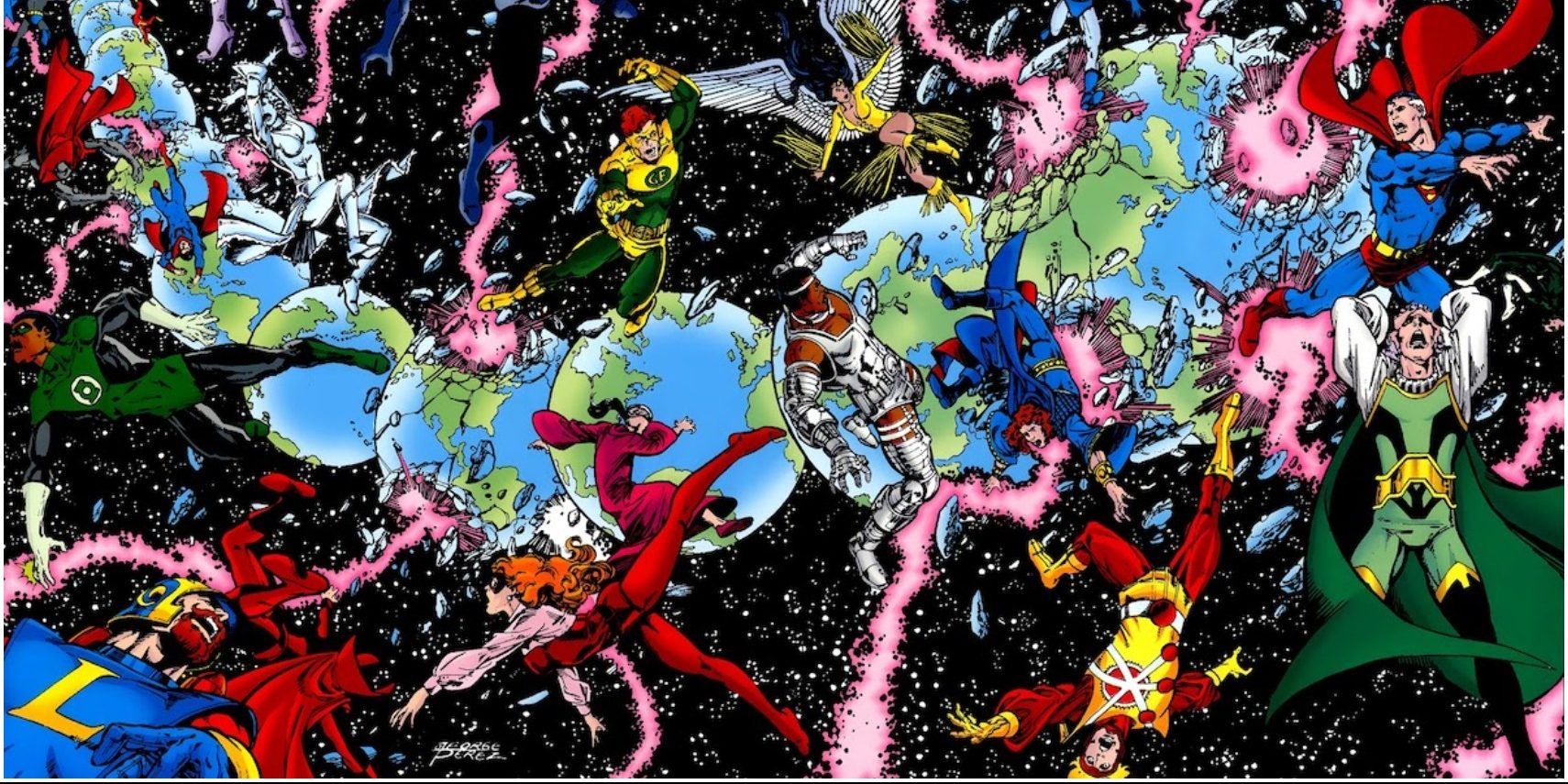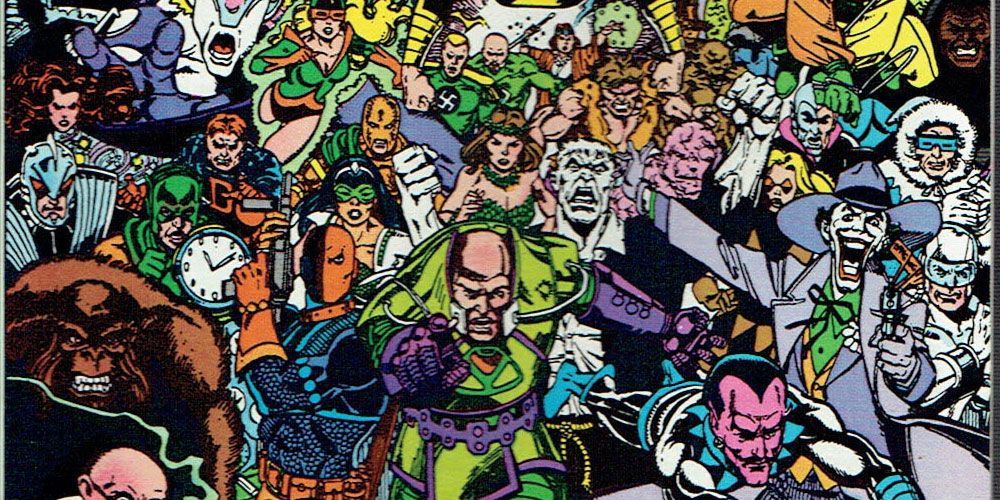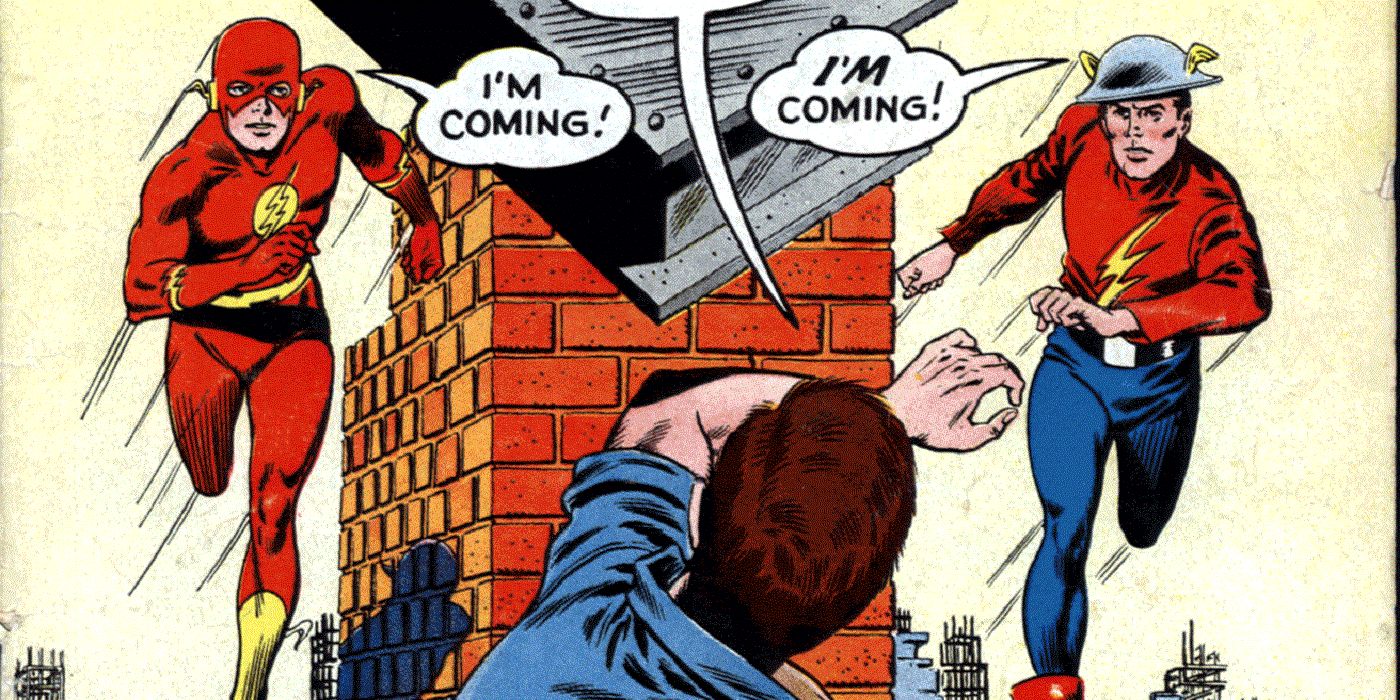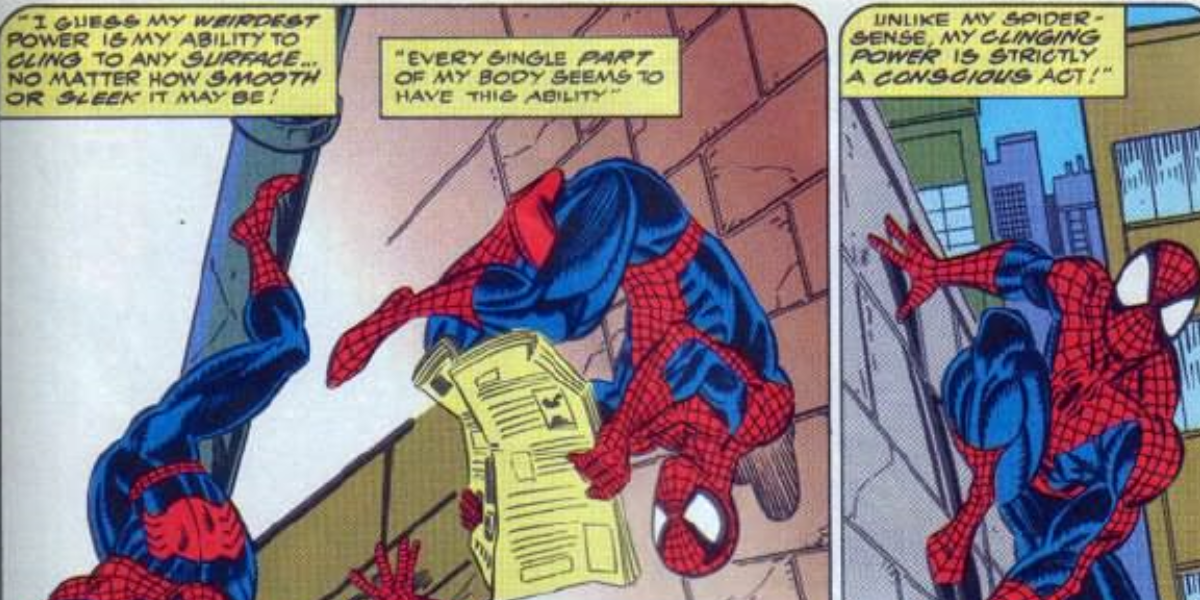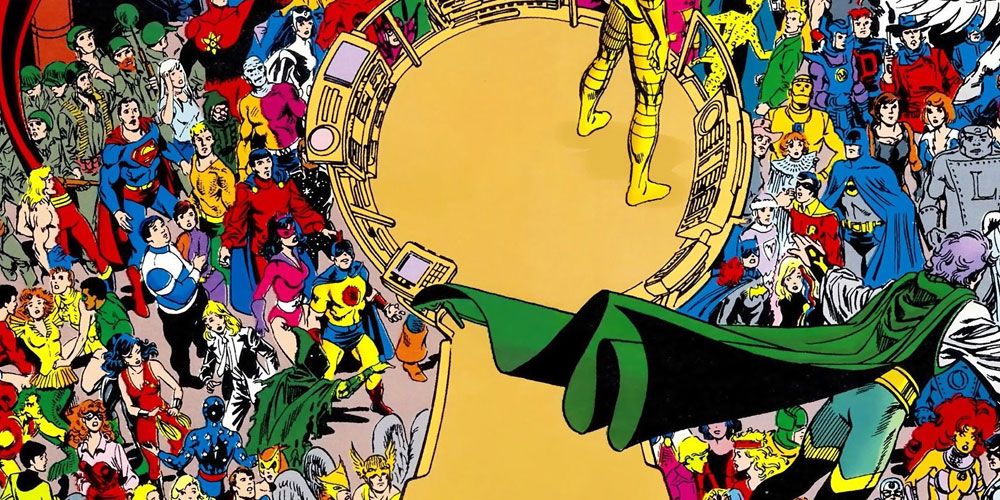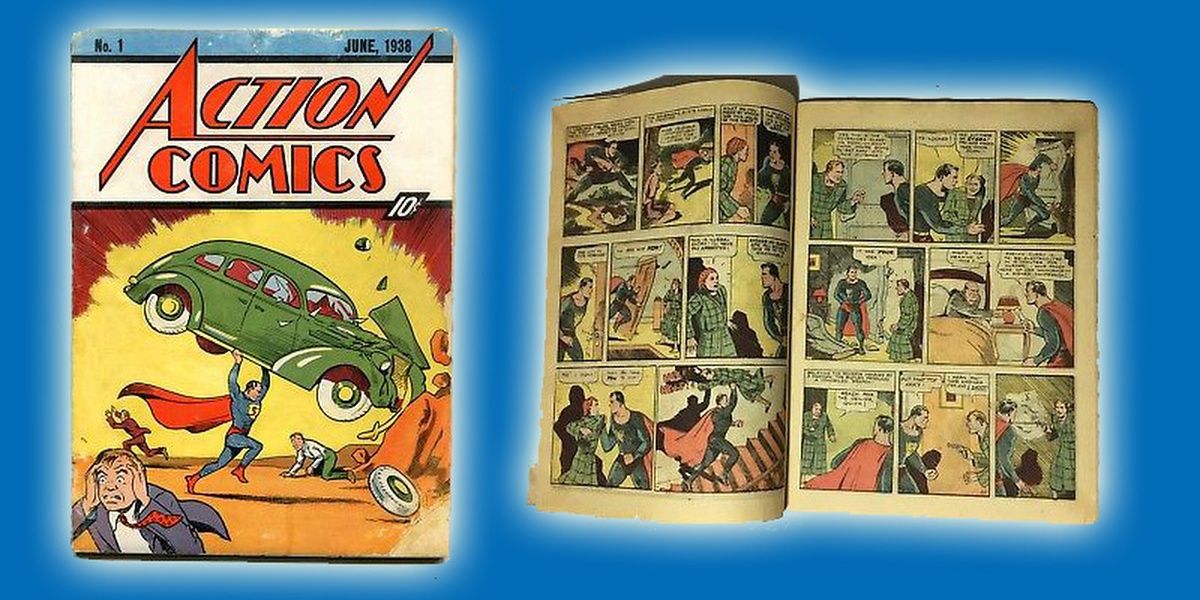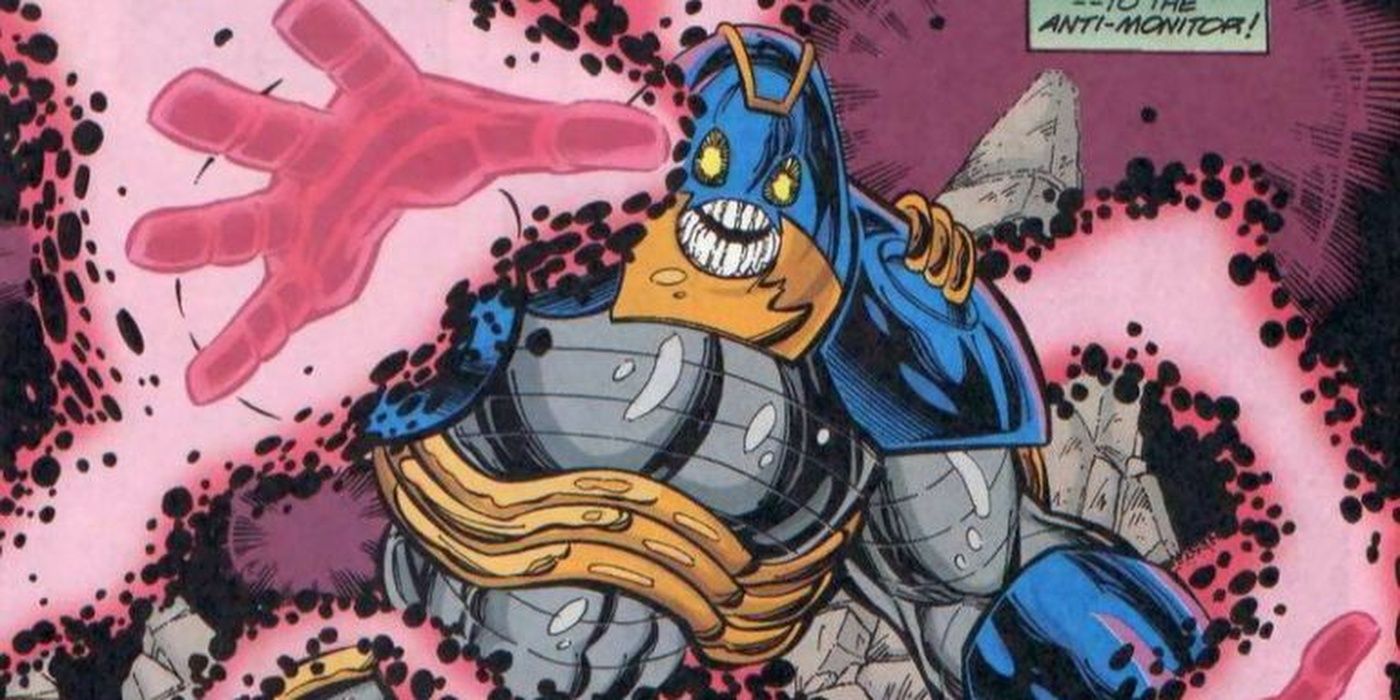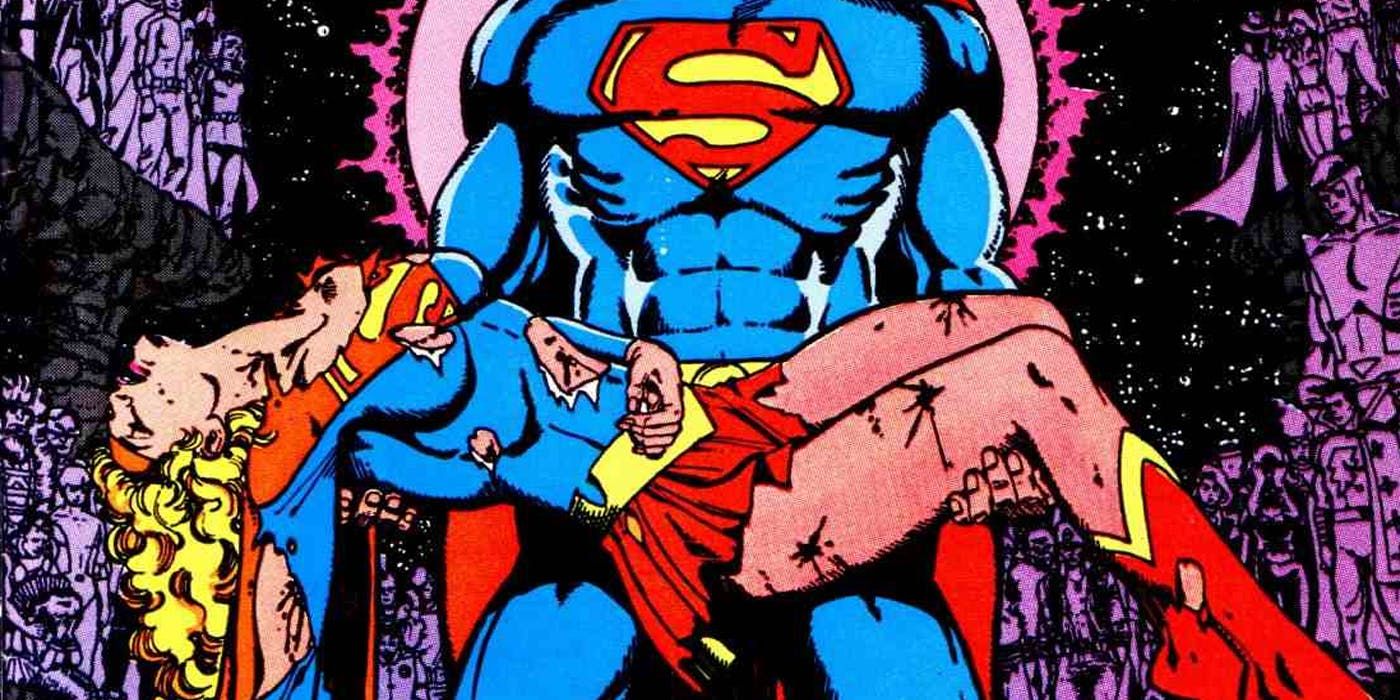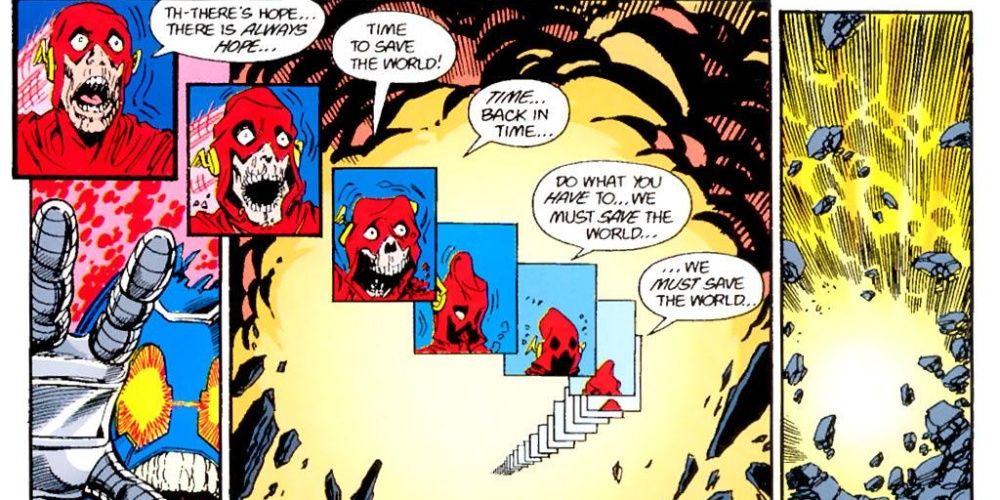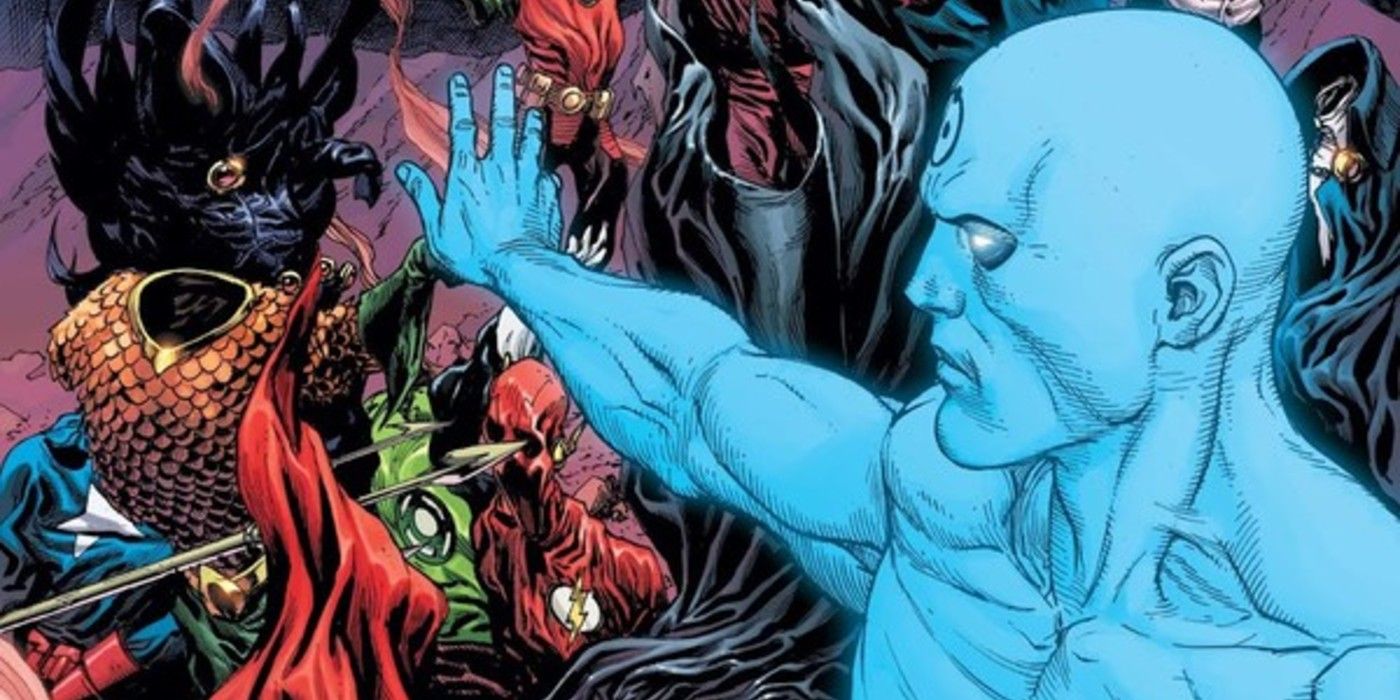Crisis On Infinite Earths was a true comic book solution to a broadly literary problem: what is and isn't canon? DC Comics had gotten by for decades simply avoiding the confusing number of duplicate versions of their characters that had carried over from different eras by saying they existed on alternate earths from the main DC continuity - Earth-1.
By the mid-80s, that had gotten difficult to track, so Teen Titans writer Marv Wolfman proposed a way to clean it all up. The rest is comic book history. Here are ten things fans never knew about Crisis On Infinite Earths.
10 Infinite Earths
The concept of the DC Multiverse had gradually - but concretely - become an integral part of the company's lore. Rather than abandon Golden or Silver Age characters through retcons or simple excision, DC creators continued to include them in stories.
The rationale for this settled on the idea that each of the different characters - such as the Alan Scott and Hal Jordan Green Lantern - existed in separate realities whole onto themselves which allowed their adventures to continue.
9 Flash of Two Worlds
The Multiverse concept has its roots in a Silver Age comic that would have massive repercussions not just for DC but for comic books and the overall concept of continuity in general. "The Flash of Two Worlds" from The Flash #123 back in September 1961 featured the Silver Age Flash Barry Allen team up with the Golden Age version of the character Jay Garrick. Garrick now resided on Earth-Two.
This opened the door to infinite possibilities, and as it turned out infinite headaches.
8 Unrelatable
Many more Earths sprang up over the years. Besides the confusing nature of DC continuity - when did all this happen? Another concern motivating Marv Wolfman was feedback that younger fans found DC characters unrelatable.
According to Wolfman, the DC universe and its characters felt old fashioned, written for young children even as Marvel comic book heroes like Spider-Man were being read by teenagers and young adults. He thought DC needed to shed the past and come into the present.
7 Not Everybody Agreed
While DC editorial approved the plan for Crisis, the event didn't receive universal acclaim from the other writers and artists working on DC books at the time. After all, Wolfman and co-plotter and artist George Perez were wiring the entire DC line-up to explode, undoing everyone else's work.
In order to create the proper build-up for the event, Wolfman needed the editors overseeing the other DC books to sprinkle in foreshadowing, typically 'odd occurrences' that couldn't be explained, but many of them dragged their feet on doing this.
6 Research Required
Given the fact that Wolfman and Perez were going to be dealing with - and destroying - fifty years of DC comic book history, they wanted to make sure they had it right. To that end, they hired a research assistant, Peter Sanderson, to go back and re-read every DC comic book from the beginning - that would be 1938 - Action Comics #1!
Sanderson developed so much research most of it went into the encyclopedic Who's Who In The DC Universe book.
5 The Anti-Monitor
Destroying multiple universes requires a big-time villain and Wolfman turned to The Monitor, a cosmic bad guy he and Perez, and used before in Teen Titans. Sort of. His evil counterpart from an anti-matter reality, the Anti-Monitor, would be the impetus for the story.
Wolfman also tried to seed the coming of the character by having other DC books include hints about him at least twice in the year before Crisis On Infinite Earths launched, but again, ran into resistance from grumpy editors.
4 Shock And Awe
In order to sell the stakes of the story and the consequences, Wolfman made a list of DC characters who could be killed in the course of the event. That turned out to be pretty much everybody, but a couple of major deaths resonate still, including Supergirl.
At the time, Supergirl was considered an awkward piece of Golden Age lore. DC wanted to focus on Superman and Superman alone, so she died and erased from continuity. Until she came back, which would be a lingering problem with the story.
3 Killing The Flash
Some editors were against killing some characters - and entire universes! - but Wolfman himself was against the idea to kill off Barry Allen. Eventually, he caved, and Barry's shocking sacrifice became the defining moment of the event and paved the way for a new Flash, Wally West.
The move was especially shocking because Barry Allen had just stepped down from his role as Flash and retired to the 30th century with Iris West in a major storyline that was completely undone by the events of Crisis On Infinite Earths.
2 A Success In Making People Angry
Crisis On Infinite Earths proved a bestseller for DC Comics and provided the shot in the arm that the company hoped for. Rebooted versions of Batman, Superman, and Wonder Woman kicked off a new era. It also generated a ton of controversy among fans. And death threats.
The letters page got infinitely more interesting in the wake of the event, as did face-to-face encounters at conventions. DC writers and artists still weren't happy either. Some, like Roy Thomas, never came around to the concept and thought it was unnecessary.
1 A Legacy In Crisis
One reason Roy Thomas and other DC artists didn't like it is they felt like it didn't solve the perceived problem with DC. In fact, within a few years, DC was back at it with the multiverse concept and has constantly tried to reboot its continuity ever since.
The Elseworlds concept became one of DC's distinguishing features and arguably two 'Elseworlds' stories, Watchmen and The Dark Knight Returns, have become their most lauded and literary accomplishments. Was it worth it? Was it necessary? DC may have had to confront its past to realize it could never truly let it go.

